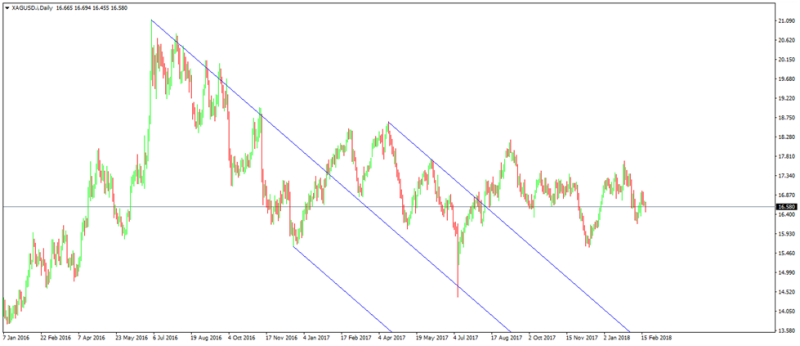TRADING WITH ANDREW’S PITCHFORK PART 2 - STRATEGIES
The first part of this project looked to set up the rules of how to apply Andrew’s Pitchfork on a chart. We used the daily Silver chart, or XAGUSD, and explained step by step the reasons for drawing the Pitchfork like below.

Keep in mind that this is the most important part, the puzzle to solve before plotting the Andrews Pitchfork. Next, we should check to see if history tells us something
By history, it means we should check if, before the final pivot point (P2), the median line (ML) had the capacity of attracting the price. If yes, it only comes to reinforce the Pitchfork is in the right place.

We have not one, but five confirmation points. They all formed before the last pivot’s placement. Now that we know the Pitchfork has the right angle forecasting the next move comes next. The first thing to look for is the ability for the ML to attract price. Again. And, it did.
The moment the price hits the ML is both a take profit or the start of a new position in the opposite direction. Remember what we mentioned in the first part? Andrews Pitchfork lines act as dynamic support and resistance too.

The second thing to do is to draw the so-called Schiff line. This is a line that connects the initial and the last point in the Pitchfork. Or, the P0 and P2. A rule of thumb says that if the price can break the Schiff line, the entire Pitchfork loses its value. In this case, it just did:

Because of that, a new process, with a new Pitchfork may start. Only this time, traders begin from the low, and look for the right places to use the three pivot points. Some traders project the UML (Upper Median Line) and the LML (Lower Median Line) at various Fibonacci distances, like 38.2% and 61.8%. The idea is to find out more dynamic support and resistance.
However, these represent only variations of the original tool. In strong trends, the Schiff line takes a long time until the price manages to break it. And, in the meantime, the market offers plenty of opportunities to ride the trend.
The beauty of using the Andrews Pitchfork is that it allows traders to ride the trend. And, at the same time, to spot a trend’s reversal.
The two videos that will come together with the articles will explain the process once again, and even explore the possibilities of the new trend to come.
Exquisite traders integrate Andrews Pitchfork with various trading theories, like the Elliott Waves Theory. The result allows them to project clear extensions in impulsive waves and spot simply from complex corrections.
All these and more, in the two videos dedicated to this series.

